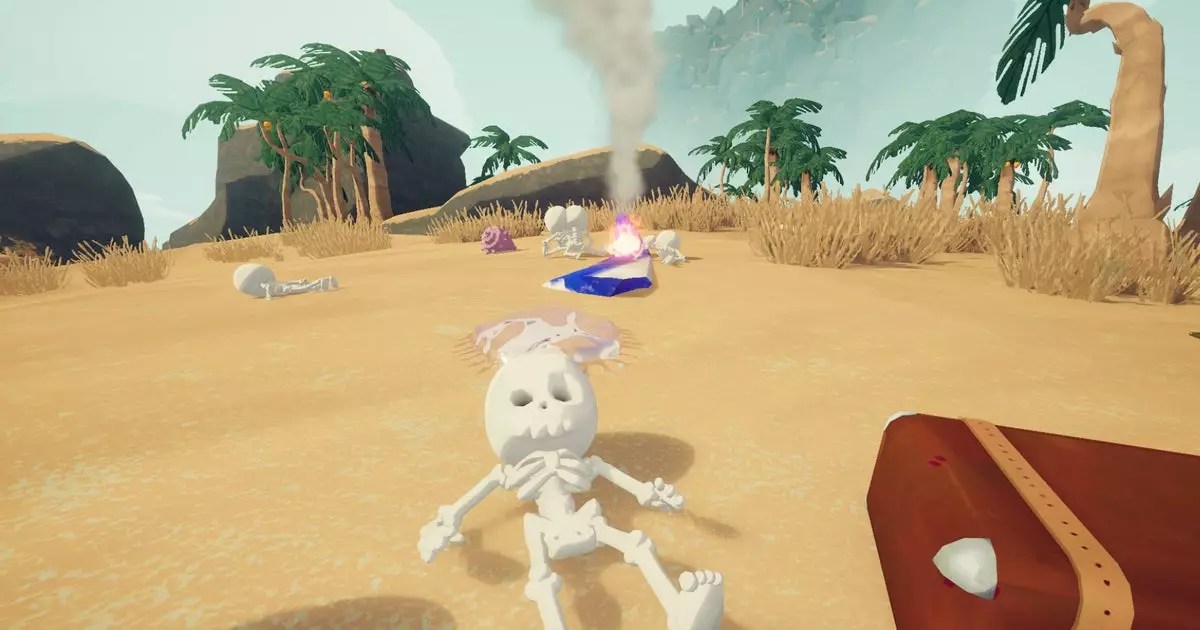In the gaming world, modding has always been a double-edged sword—offering players the chance to customize and extend their experience, but often risking crossing sensitive boundaries. The recent introduction of the Everest mod for the co-op climbing game Peak exemplifies this tension. While Peak itself is a challenging adventure that pushes players to conquer towering mountains, the Everest mod subverts that experience by deliberately turning it into a morbid tableau of death, populated with skeletons of fallen players. This modification pushes the boundaries of game customization, emphasizing a darker, more visceral connection among players that exists not just in life, but also in death.
The core idea behind Everest is surprisingly simple yet profoundly impactful. Whenever a player meets their demise on the mountain, the mod records that location and populates the area with skeletal remains of other players who have fallen before. Over time, these bones accumulate—not just as gruesome decorations but as symbolic markers of shared danger, memory, and a community forged in peril. By enabling players to see where previous climbers have perished, the mod introduces a narrative and emotional depth that was lacking in the original experience, turning the mountain into a living, breathing memorial to its explorers.
However, it is crucial to recognize the potential implications of such alterations. While some may find humor or camaraderie in the grisly sight of countless skeletons, others might view it as trivializing death or making light of tragedy. The provocative nature of Everest fuels discussions around the limits of modding and whether such dark themes have a place in recreational gaming. Despite this, the mod’s creator, Steven, emphasizes that their work aims to evoke connection—someone’s fallen comrade becomes a silent guide for future climbers, creating a shared bond rooted in mortality.
Challenging Conventional Paradigms: Turning Fear into a Shared Experience
What sets Everest apart is its capacity to transform grief and danger into an interactive social phenomenon. The accumulation of over 10,000 skeletons from thousands of players creates a surreal, haunting landscape that provides more than just visual shock—it becomes a symbol of collective vulnerability. Instead of the conventional sense of personal conquest, players are confronted with the realization that many have tried and failed before them, their remains serving as silent witnesses to the peril that awaits.
This shift from individual achievement to communal memory is striking. It echoes the design philosophy seen in games like Dark Souls and Elden Ring, where death is not just a setback but a narrative device that enhances immersion and emotional resonance. Everest’s skeletons act as morbid signposts—warnings etched into the landscape, inadvertently encouraging a cautious approach and fostering a shared understanding among climbers. This design invites players to reflect on the risks others have taken, perhaps inciting a deeper respect for the challenge rather than blind bravado.
Furthermore, the mod highlights the enduring human desire to find meaning and connection—even within the context of mortality. By mapping death locations and populating them with bones, Everest transforms the mountain into a memorial, a collective graveyard that underscores the unpredictability of adventure. It suggests that every attempt, successful or futile, contributes to a community narrative. The shared experience of risk, failure, and remembrance becomes more tangible, fostering a sense of camaraderie grounded precisely in our mortality.
The Daring Edge of Creativity: Risks and Rewards of Dark Mods
Mods like Everest exemplify the daring spirit of gaming innovation—pushing boundaries to craft fresh and provocative experiences. But with such boldness comes responsibility. Not every player will appreciate the morbid tone or the potential discomfort associated with seeing countless skeletons scattered across a familiar landscape. The detailed configuration options provided by the mod allow players to tailor their experience, adjusting variables and notifications to suit their preferences, but the very concept remains inherently unsettling.
Despite this, the community’s fascination with darker themes in games reveals an innate human curiosity about mortality and the unknown. It transforms the game into a space where fear, humor, and camaraderie coexist—challenging the idea that games must always promote escapism solely through positivity. Everest, in this regard, is more than just a mod; it is a statement about the power of modding to redefine what gameplay can mean.
Yet, one must critique the potential for such mods to trivialize tragedy or exploit death for shock value. The line between creative expression and insensitivity is thin, and developers or modders must exercise caution. When harnessed responsibly, however, this blending of dark humor and community storytelling can deepen engagement, provoke thought, and build a stronger sense of shared adventure—even if that adventure is paved with bones. Ultimately, Everest exemplifies how pushing gaming boundaries can tap into our collective subconscious—challenging, disturbing, and oddly inspiring us to reflect on our mortality within a virtual space.


Leave a Reply